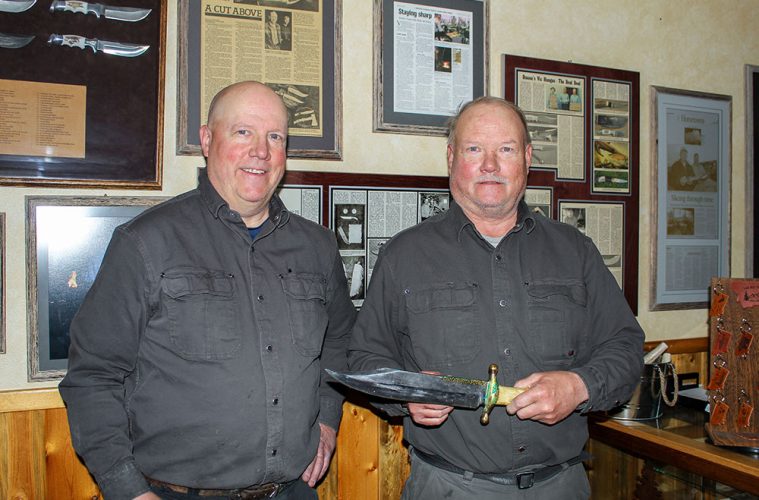LEGENDARY MONTANA KNIFE COMPANY OFFERS THE HIDDEN TREASURE OF RUANA KNIVES
Hidden away in what was once an automotive garage in the community of Bonner, Montana—a small town just east of Missoula—is the plain-front (there is no sign revealing what’s inside) workshop of one of the most famous, nay legendary, knife companies in the country.
Ruana Knife Works, Inc., founded in 1938 by the late Rudolph H. “Rudy” Ruana, has produced some of the finest blades on the landscape. Many people collect the knives known to have been crafted decades ago by Ruana, and it is not unusual to hear knife aficionados refer to those originals as “a Rudy.”
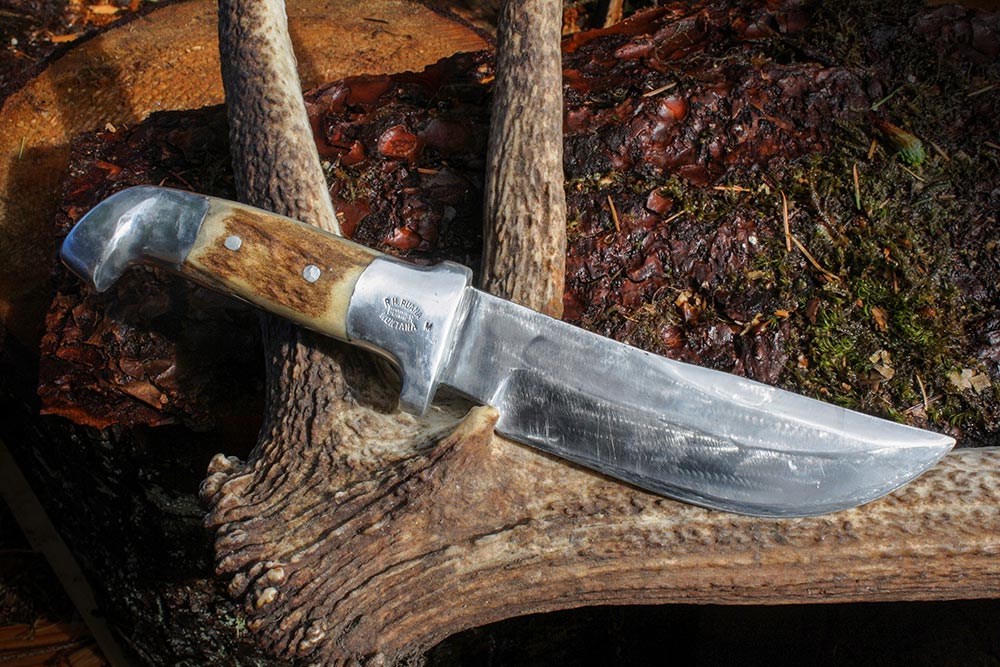
Knives stamped with the Ruana brand are not just collectors’ knives. They also are workhorses.
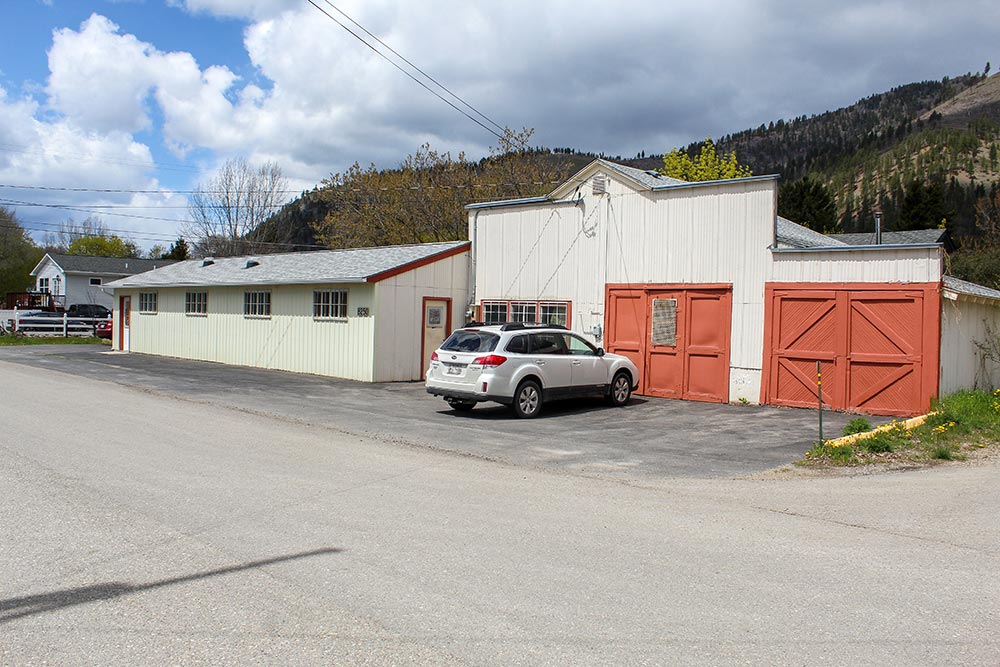
What looks like an old auto garage—which it once was more than 80 years ago—is home to Ruana Knife Works in Bonner, Montana. This family-owned company produces remarkable knives that are not only workhorses, but also show horses.
Decades ago, on a vacation trip to Alaska with my then-fiancée, we stopped at a small gun shop on the south side of Anchorage and there, in a cardboard box, marked for a ridiculously low price, were a couple of Rudy originals, including one my fiancée bought for me as a memento of our trip.
It was a Model 17B with a 6-inch upswept blade, polished aluminum handle with elk antler inserts and an edge that was pleasingly sharp. When I returned home, I spent an hour gently honing it on a smooth oilstone to an even finer edge, which has rarely had to be touched up ever since.
I have skinned several deer with that blade over the past 45 years, and a few strokes on a diamond stone is all that’s been required. When I carried it on a Southeast Alaska deer hunt with three guys from New England several years ago, one of those fellows happened to be a Ruana collector who instantly coveted my knife. It was not for sale then; it is not for sale now.
Born in 1903, Rudy Ruana was an extraordinary craftsman. According to a book about Ruana Knives, “Hear the Hammer,” written and edited by Stephen Smith, who researched the story with Frank Towsley, Rudy had a “pronounced lack of enthusiasm for reporters and publicity.”
That partly explains why the company continues in the unmarked building. This is a company not in search of publicity but devoted to perfection.
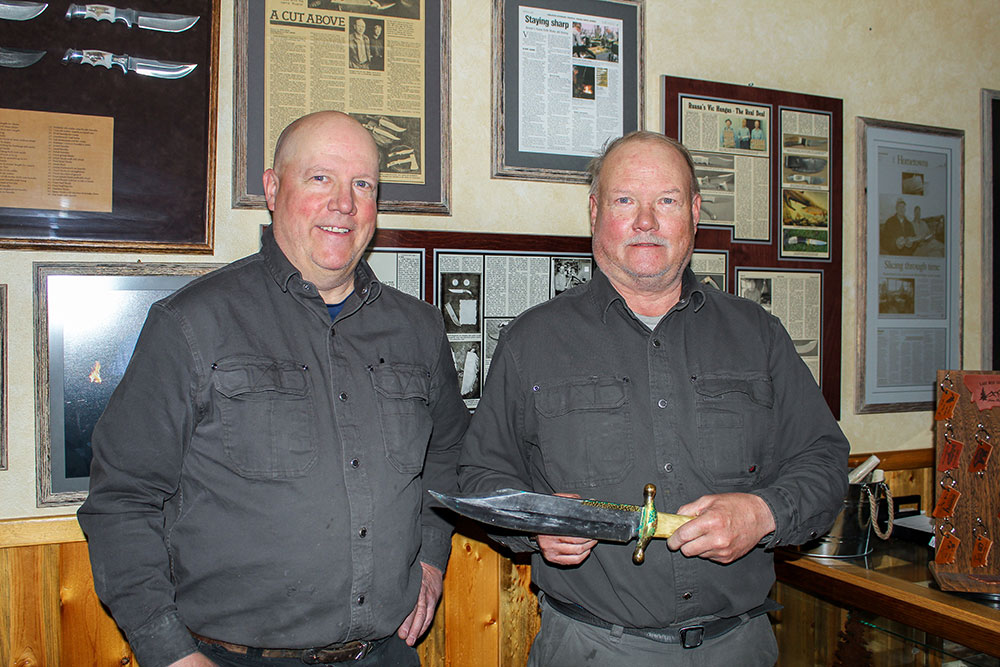
Mike and Mark Hangas, brothers and grandsons to legendary knifemaker Rudolph “Rudy” Ruana, are the proprietors and currently the complete “staff” at Ruana Knife Works. Here they show off a big Bowie knife that is a specialty in the history of Ruana Knife Works.
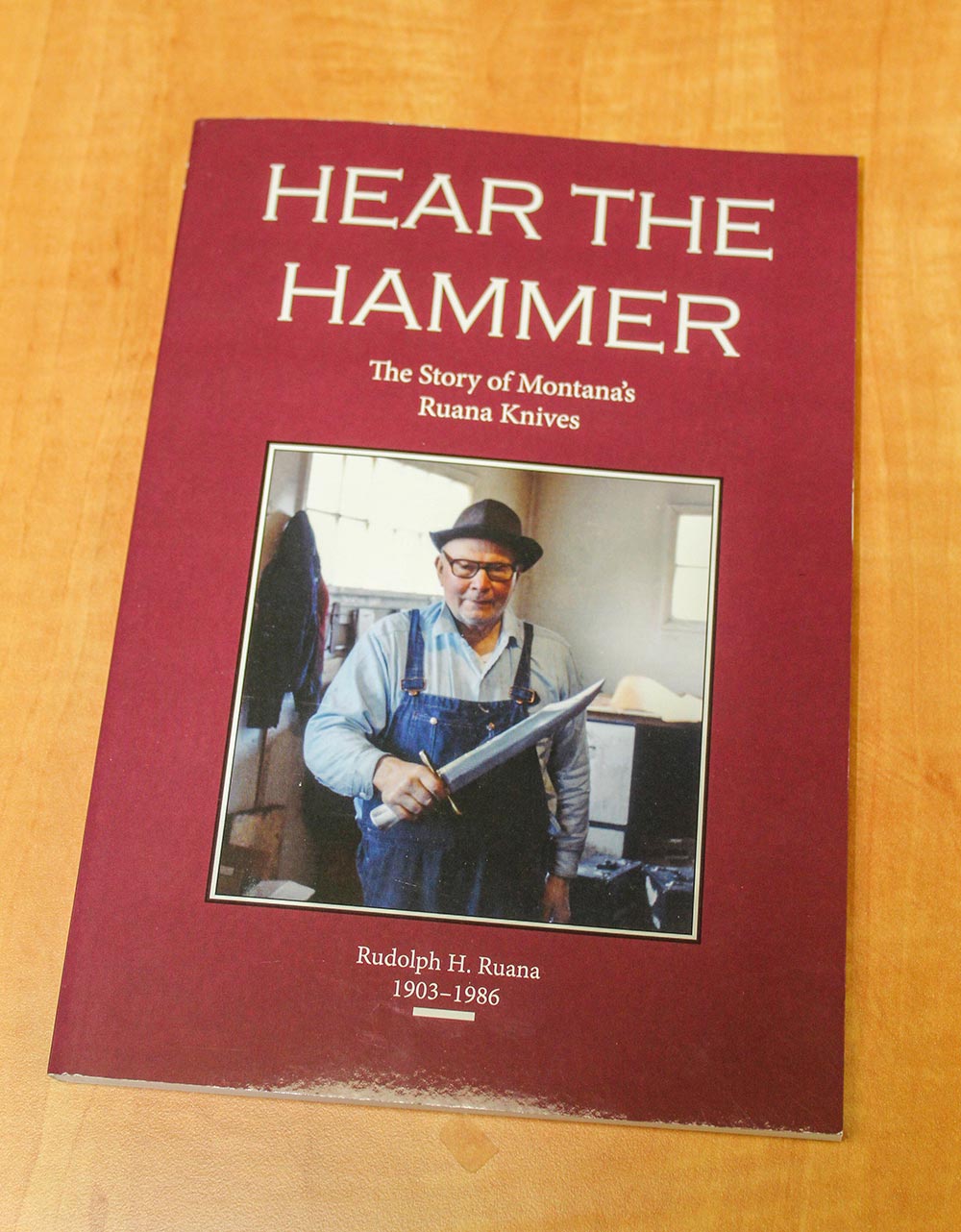
“Hear the Hammer” is a biography of legendary knifemaker Rudolph “Rudy” Ruana. It’s the history of a company that focuses on quality rather than quantity.
It doesn’t mean people can’t find them. Just don’t expect a big, fancy manufacturing facility. The old mechanic’s garage does not appear to have changed a lick on the outside, and once you’re inside, it is a Spartan affair.
The actual workshop is not well-lit. It’s filled with machines, including the original milling machine designed and built by Rudy in 1943, and it is still in operation. The place smells like a workshop, and that’s a compliment. There are cardboard boxes filled with antler pieces, a forge for melting aluminum used in the handles, a grinder, and belt sander. A coal-fired forge is still used for hardening blades. There is dust and lots of history.
“Ruana Knife Works, Inc., founded in 1938 by the late Rudolph H. ‘Rudy’ Ruana, has produced some of the finest blades on the landscape.”
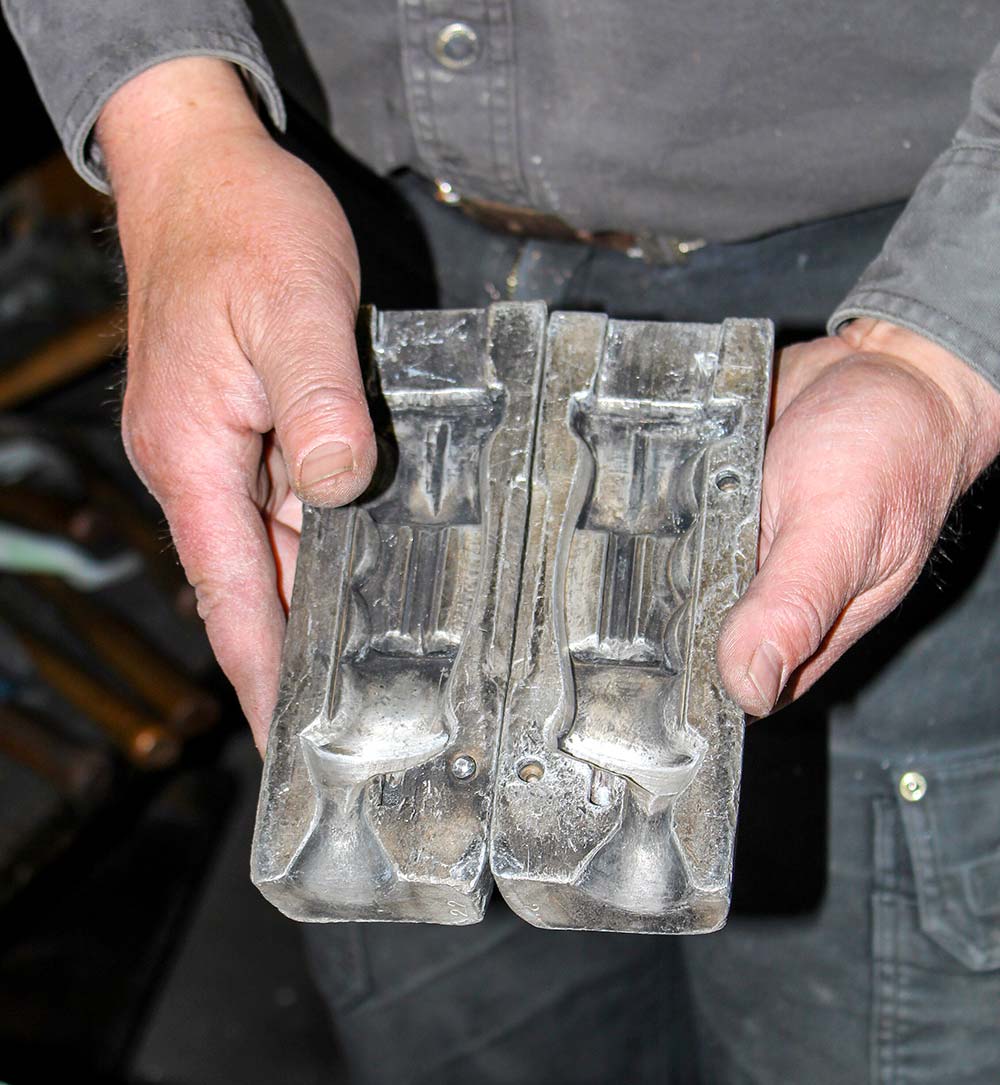
Molds into which molten aluminum is poured to form the unique Ruana handle. The finished handles give each Ruana a unique appearance.
When Rudy Ruana passed in 1986, the company continued under his son-in-law, Victor Hangas. These days, Vic’s sons Mike and Mark essentially are the company, making superb cutting instruments the old-fashioned “Rudy way,” just a few at a time, with plenty of care and attention to detail. When I visited the shop, Mike said they had virtually no inventory, and they were working at whittling away on a backlog of orders.
“We’re so far behind,” Mike confessed, “we’ve backed off on [taking] new custom and Bowie orders. We’re trying to catch up.”
And then he added something other businesspeople might find surprising:
“We don’t require a down payment,” Mike said. “We’ll let customers know when the knife is finished, and if they don’t buy it, that’s fine.”
RICH TRADITION
Rudy Ruana operated the shop until he was 83 years old. Vic came aboard in 1964 and was there until 2019. Mark Hangas has been involved since 1976, and brother Mike has been part of Ruana for the past 38 years. A third Hangas brother, Matt, worked in the shop for a while, along with a cousin, Dave, who spent a short time there, according to Mike, who greeted us for an interview on a pleasant spring afternoon.
In short, Ruana has been a family affair since it was born. Mike said the company has essentially come “full circle” and is down to the present two-man shop, with Mike’s wife, Kirsten, out front in the office.
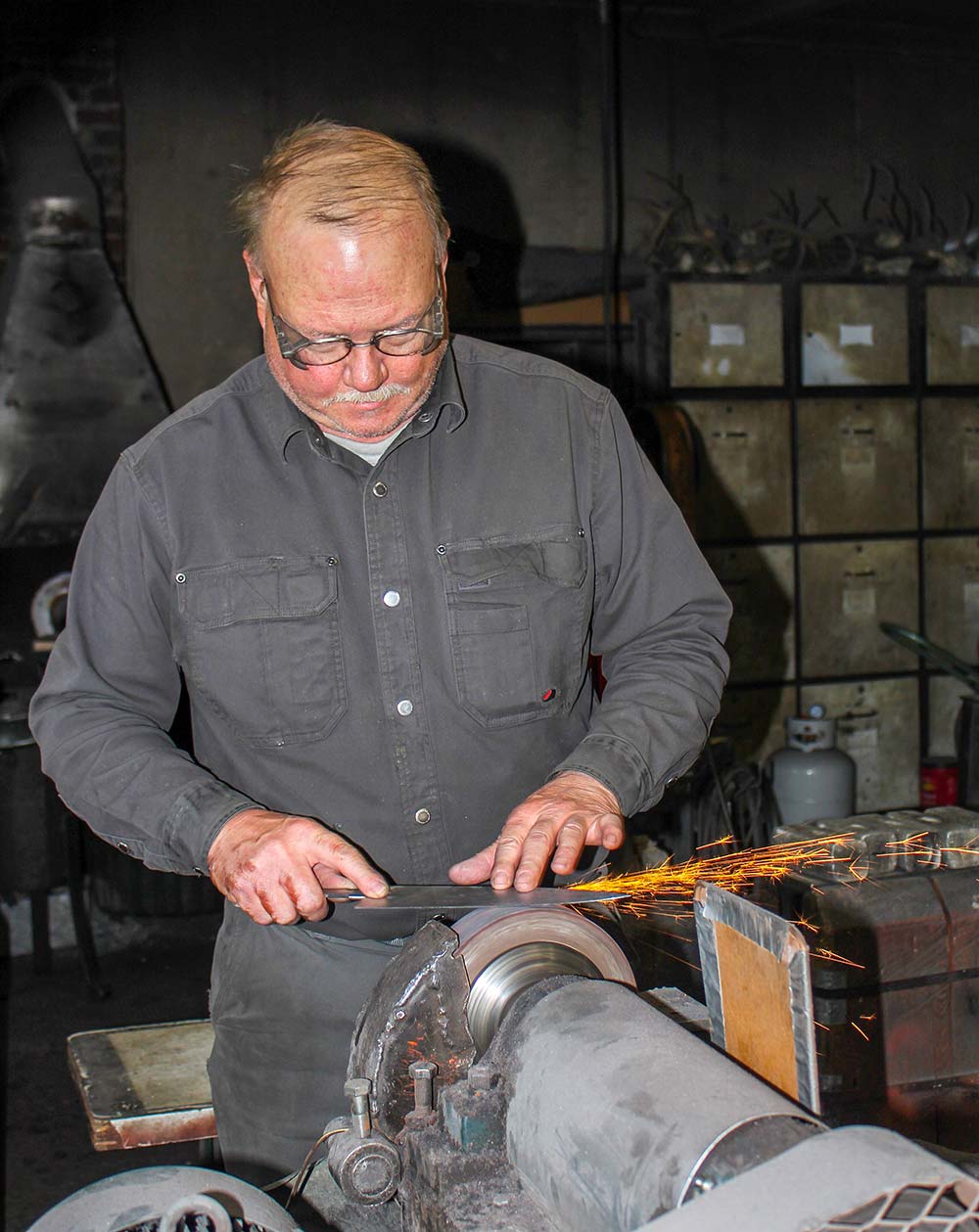
Sparks fly as Mark Hangas works on a knife, slowly bringing an edge to the blade. It is a long, painstaking process, creating the famous Ruana cutting edge.
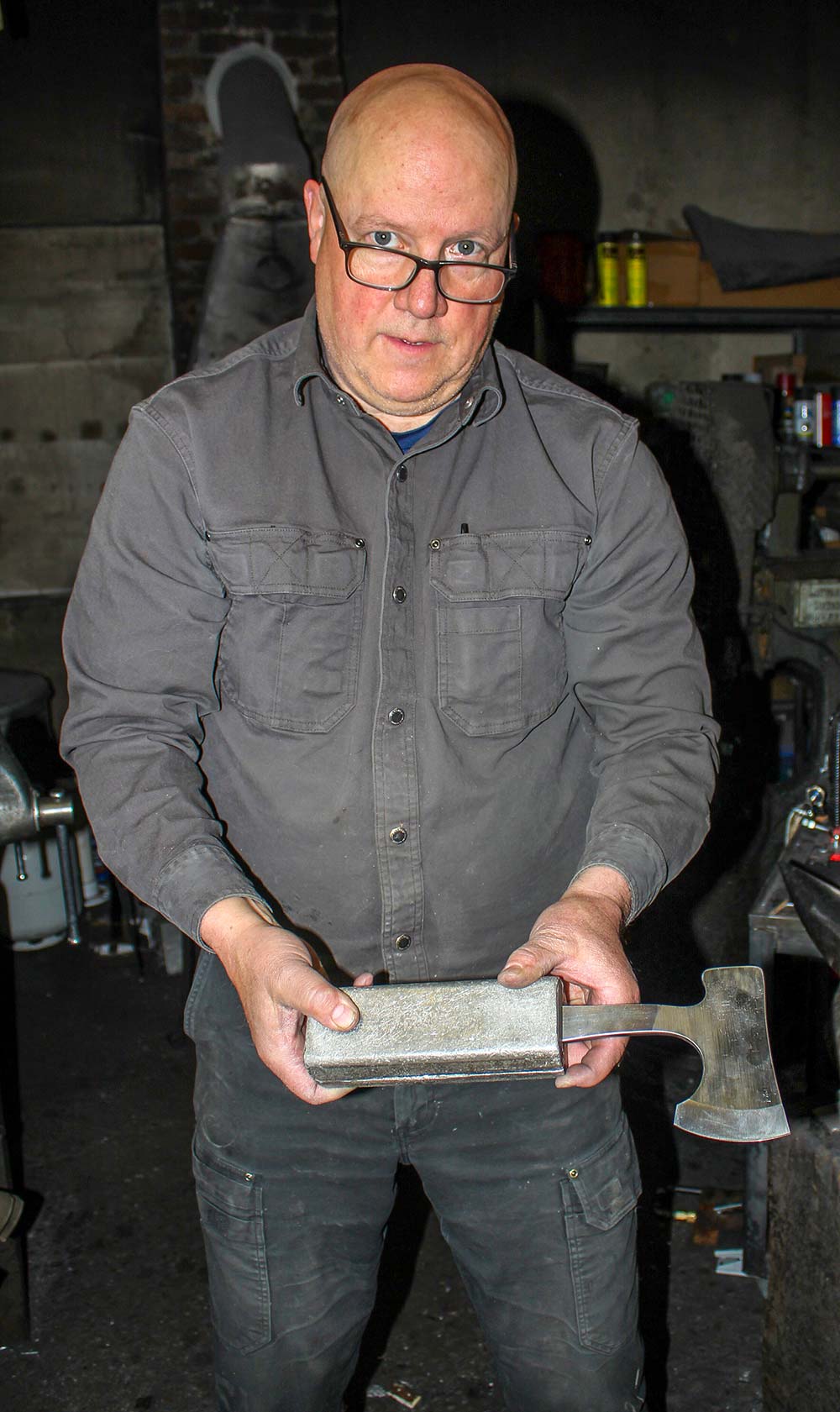
Mike holds a mold closed around an unfinished hatchet blade. The aluminum sets up in just a few seconds, bonding itself to the full-length tang of the blade.
When Rudy started the business, he used Vanadium spring steel for the blades, and during the World War II years, according to “Hear the Hammer,” he used Silica Manganese spring steel from Studebaker automobiles when other steel was in short supply and—as Mike observed—“Guys from that era like grandpa were resourceful.”
Today, Ruana blades are made from 1095 high-carbon steel, and they hold a superb edge just as Rudy’s originals. Mike says it is the World War II-era knives using the Studebaker spring steel that have garnered the most attention from collectors. Still, other Ruana specimens fetch some handsome prices.
Something else some collectors want are the flat sheet cutouts, the steel sheets from which blade blanks have been cut with a water jet. There were a couple of those in the Ruana shop, and my guess is that somewhere out there is a collector who would be delighted to take them home and hang them on the wall.
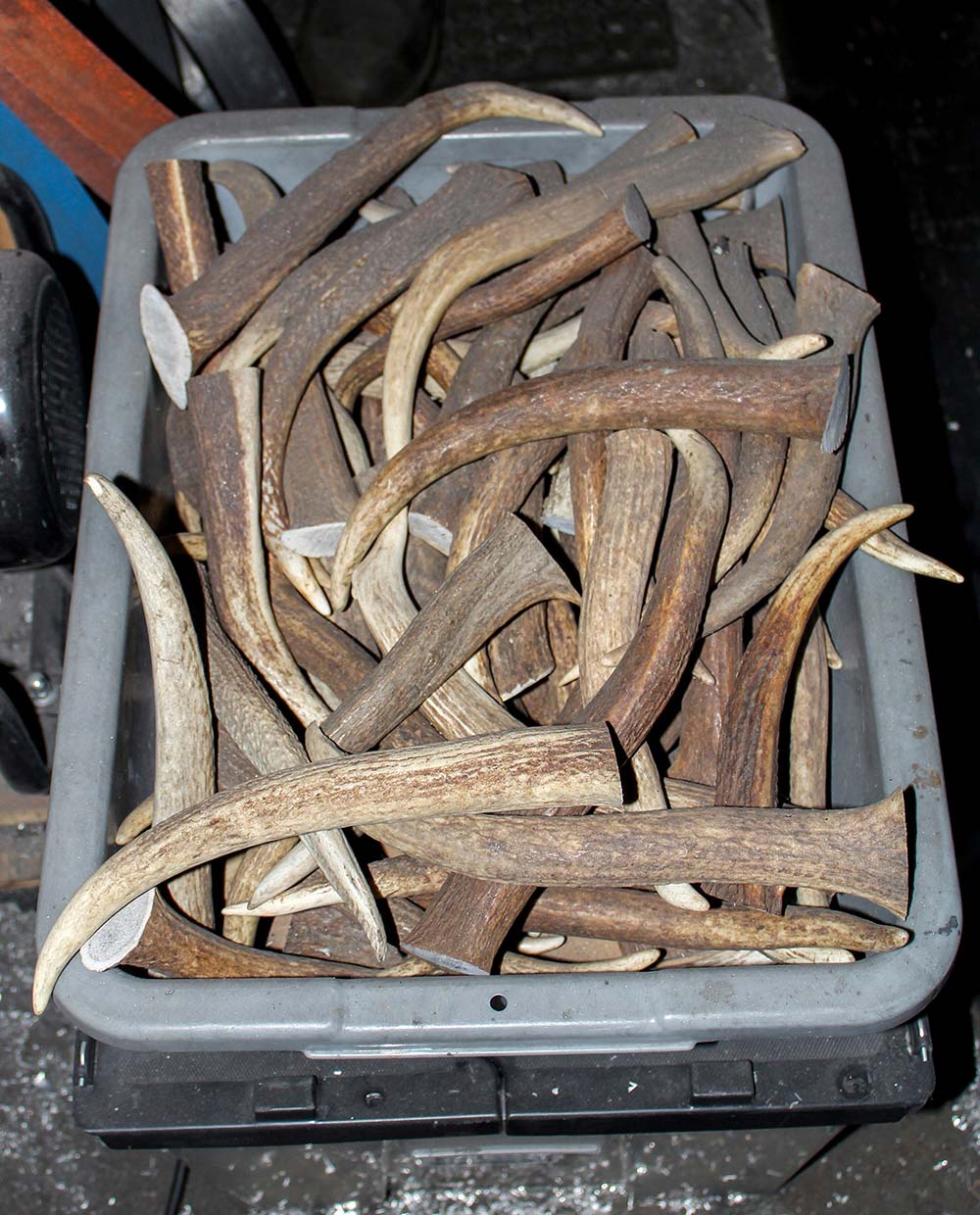
Elk antler is raw material at the Ruana shop, and there are usually a couple of tubs waiting to be crafted into knife-handle insets.
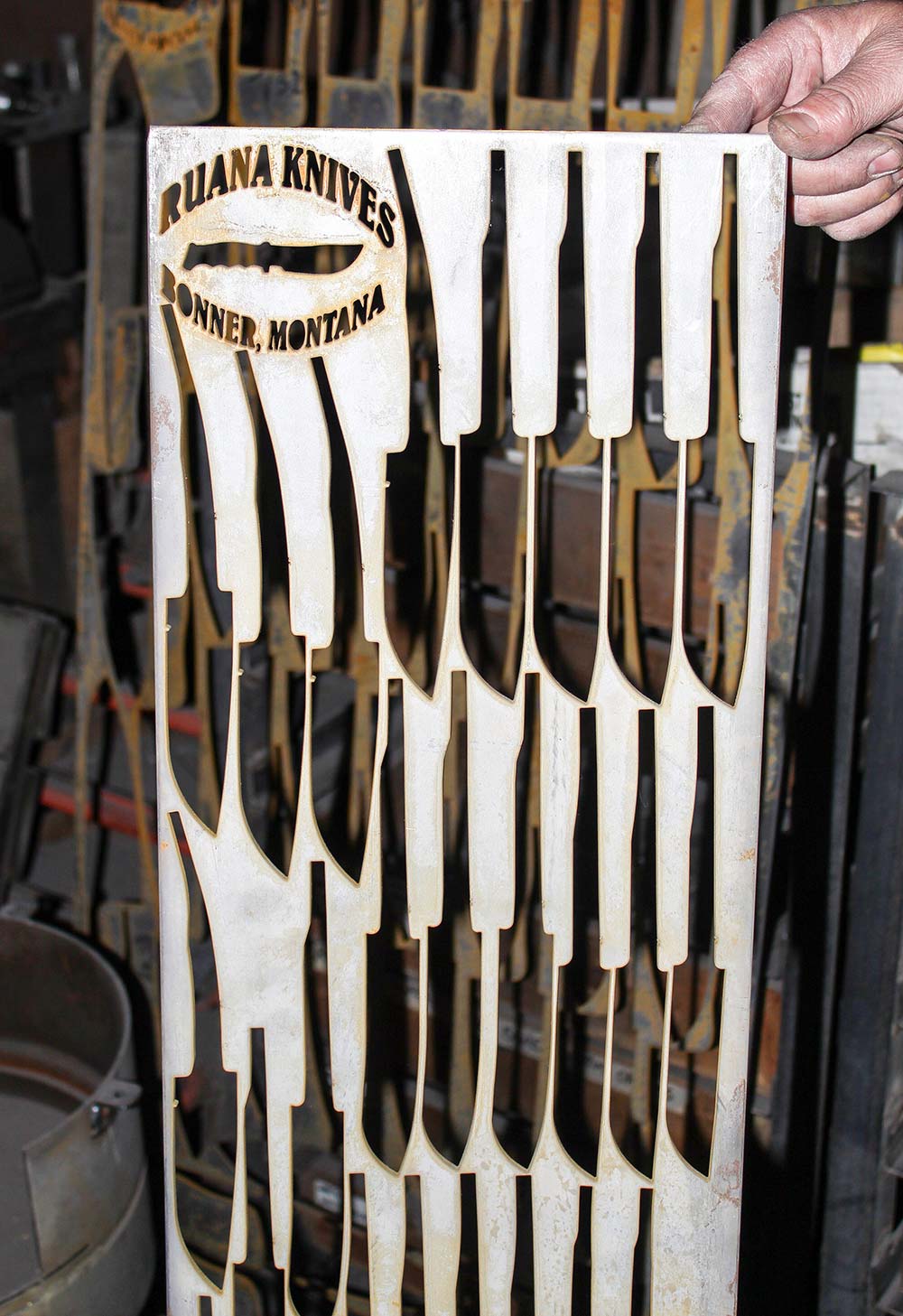
People actually collect these cutout sheets of steel from the Ruana workshop. If it says “Ruana,” people want it.
In addition to telling the Ruana history, the 140-page soft cover book details the different periods and meanings of different stamps. From 1944 to 1962, there was a tiny knife stamped below the brand, and from 1962 to 1983 the knives wore an “M” stamp. In 1984, the “M” disappeared. Knives stamped with “S” (1956-1958) are saltwater-hardened and specimens bearing a “T” stamp (1942-1962) have a “Razor Temper.”
There is also a section of the book filled with letters from satisfied customers, plus black-and-white images of models produced over the years, historic prices, and anecdotal information about sheaths, handles and even reprints of stories done many years ago.
During my visit, Mark checked on the vintage of my personal knife, which is stamped with an “M” and dates back to the mid-1970s. Originally, it sold for $27.50. Today, he indicated, it might fetch in the neighborhood of $700 from a collector! (As I said, it’s not for sale.)
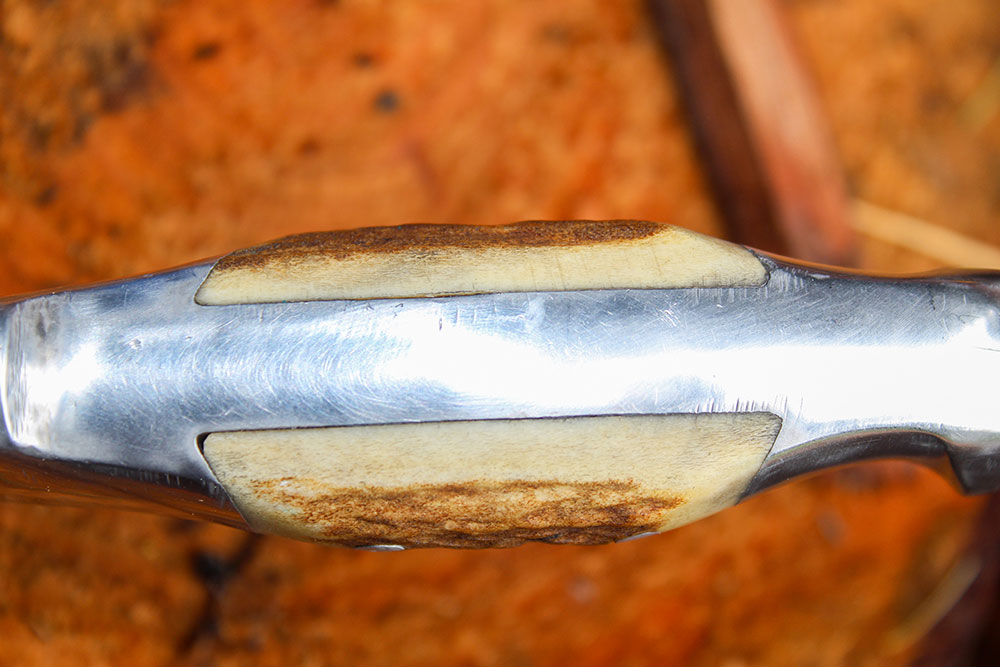
Something else setting Ruana knives apart from other brands: elk antler inserts dovetailed into the aluminum frames add a touch of elegance.
Back in the early years, Mike said buyers were not so interested in looks as they were in function.
“They were work knives,” he said. “Now, they’re collectors. The old ones, you look on eBay, some people are asking crazy prices.”
Ruana’s early knives were not marked with letters designating the period of manufacture. They were simply stamped “R.H. Ruana, Bonner Montana.” Today’s knives are marked “Ruana” over “Bonner, Montana.”
TRADEMARK HANDLE DESIGN
One thing that sets many Ruana knife models apart from other knives is how the handles feature sections of elk antler dovetailed or square-cut into the aluminum-grip frame. I’ve always been able to spot a Ruana from a distance because of that, though the classic Bowie models crafted back in the ’60s and ’70s (I would personally grovel for one of these beauties) have full elk antler grips with brass butt caps.
On some models, instead of antler, Ruana has occasionally used rosewood, and even in the grainy old black-and-white catalog images, one could tell they were very handsome. Alas, none of these models was available in the shop for photographs, and that was a heartbreaker.
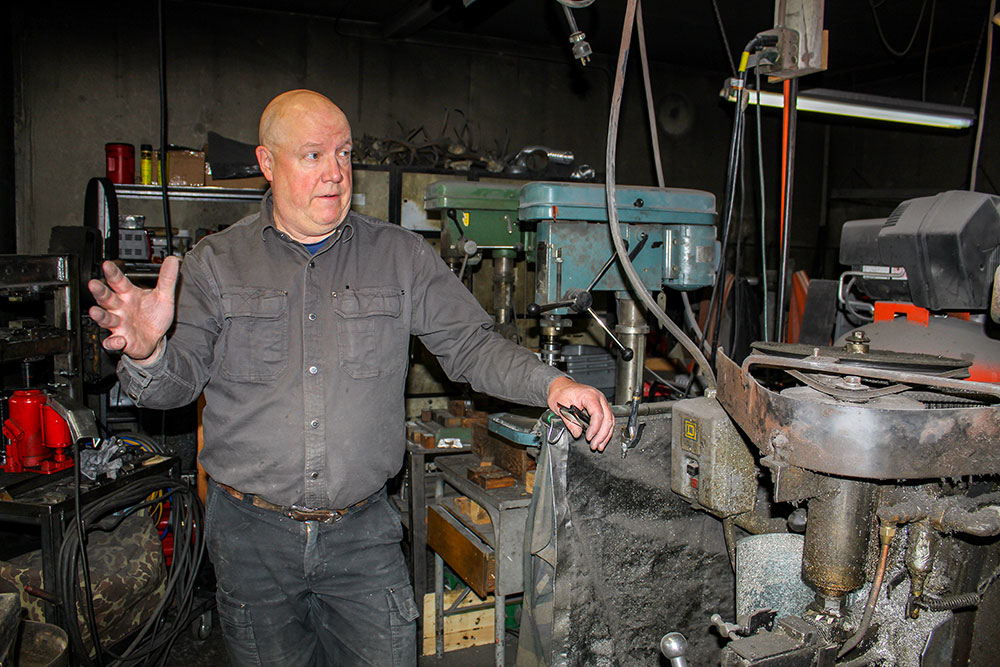
Mike Hangas details the first machine ever used in the knife shop, a milling machine built by the late Rudy Ruana some 80 years ago and still in service.
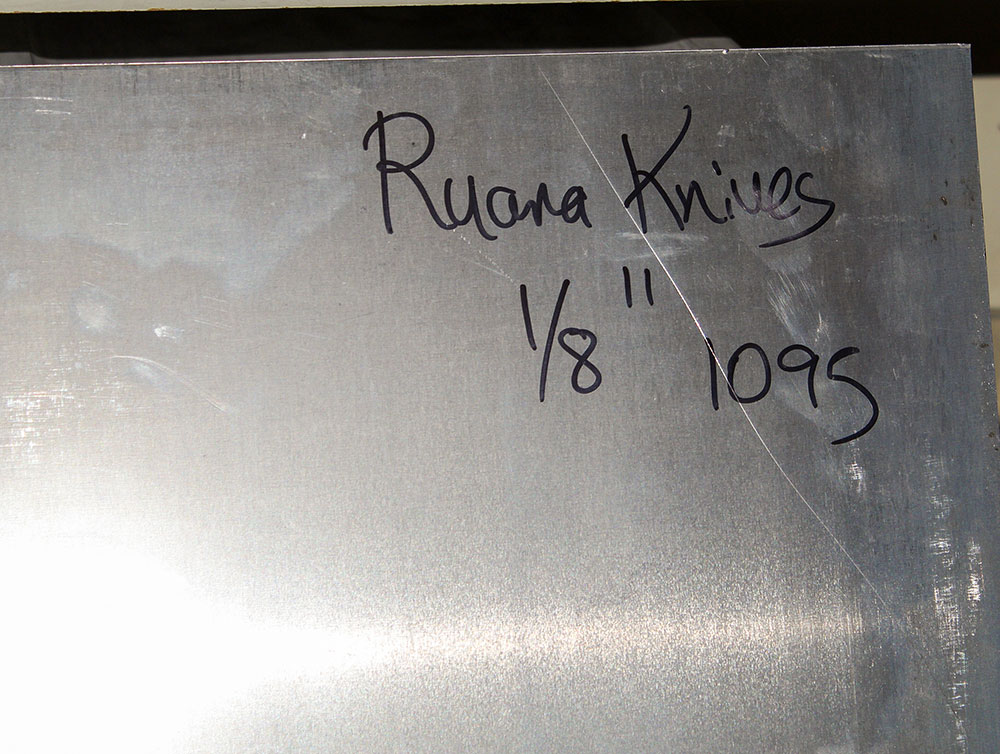
Marked for die cutting is a sheet of 1095 blade steel.
The aluminum handle seems to be a Ruana trademark. Using molds into which the tang of each blade is inserted, molten aluminum heated to 1,400-1,500 degrees F is poured into the mold, and it essentially welds itself to the steel.
“Once the aluminum is in [the mold],” Mike noted, “it sets up in five or 10 seconds.”
The blade surface is kept cool with water so as not to ruin the temper, and when the aluminum sets and cools, “It’s there to stay.” When the aluminum cools, it is polished to a smooth, almost mirror-like finish. The finished product is beautiful.
“While some of their tools have changed, the tradition and business philosophy remain.”
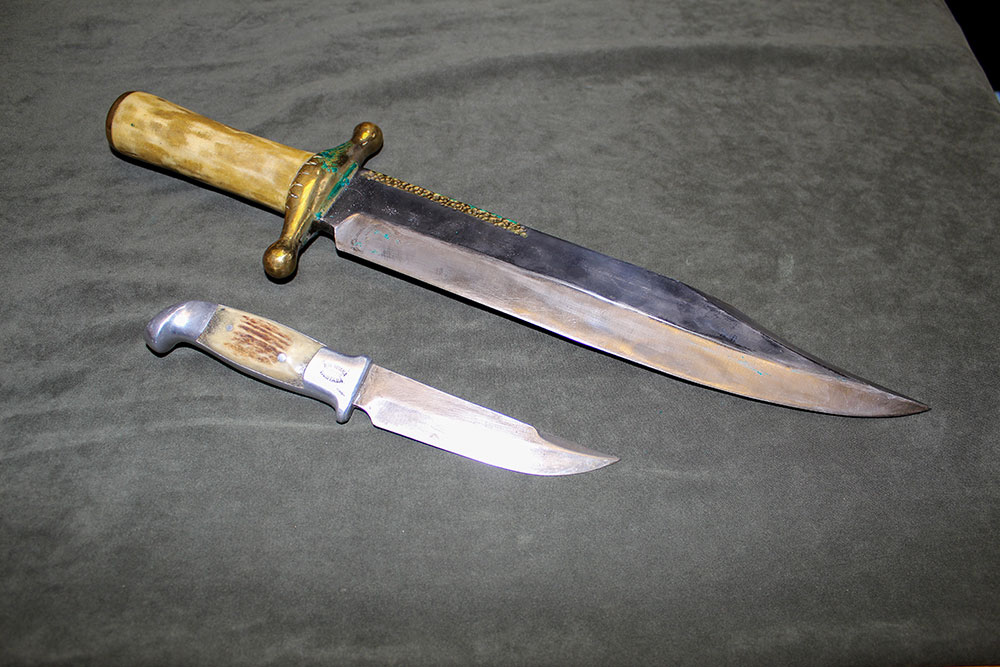
Big and small. A huge Bowie model made many years ago, shown with a traditional hunting knife, underscores the broad appeal of Ruana knives.
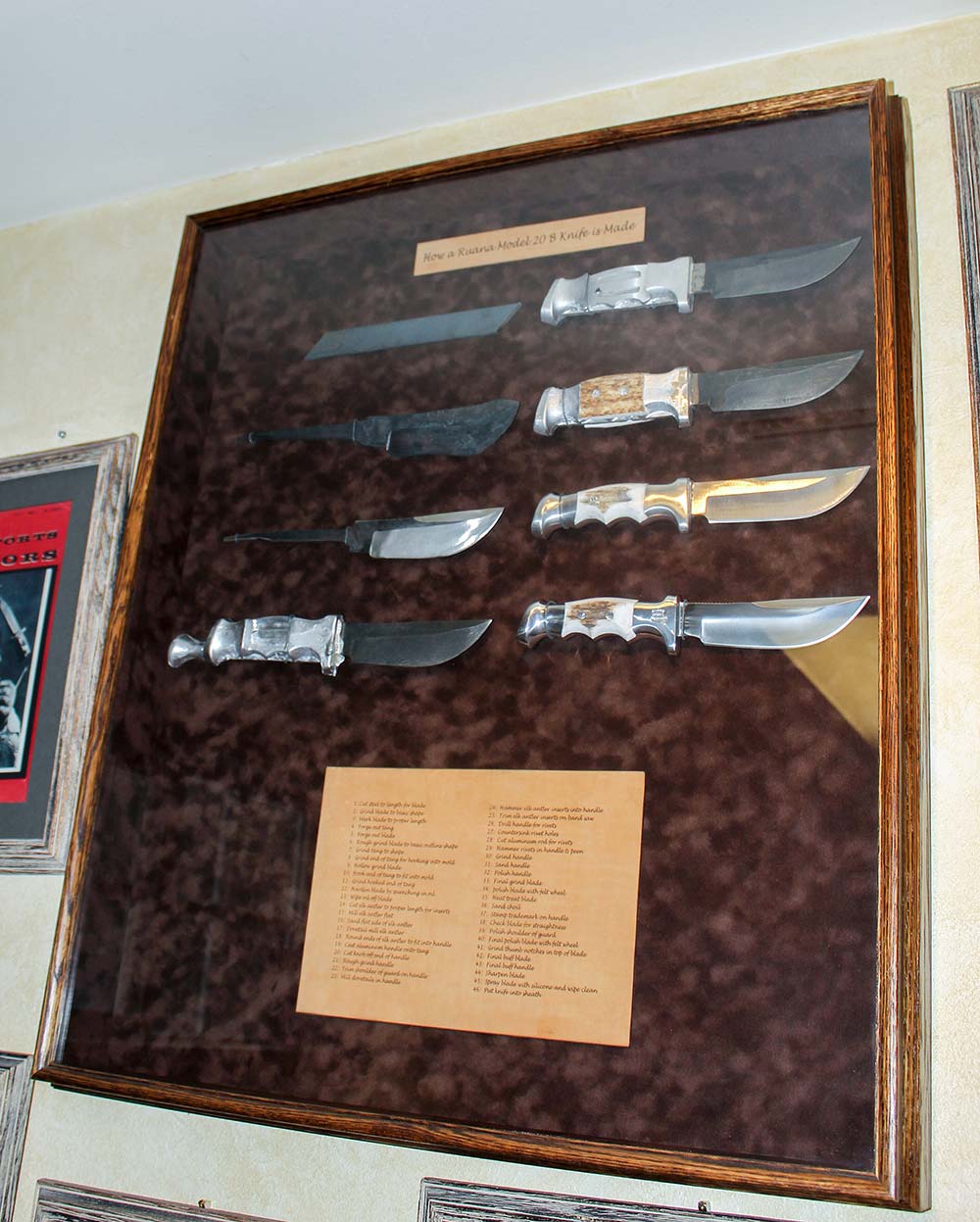
The front office at Ruana Knife Works is something of a museum and education center. This framed showpiece shows different models and explains how they are made.
The elk antler used for the handle insets comes from several sources, primarily big game hunters or people who pick up antler sheds. Since we’re talking about Montana, it’s not all that difficult to find the raw material, and Ruana trades for the antlers. Mike recalled that back in the late 1970s and early 1980s, “Antlers were tough to come by due to the market in Asia.”
Nowadays, antler is more available, even though it is also used for unique chandelier designs and other decorative products.
In recent times, Mark has been experimenting with Damascus steel, and Kirsten has launched a side endeavor utilizing scrap leather to produce small key ring decorations die-cut in the shape of various states, such as Montana and Washington. It’s a clever utilization of otherwise waste material that helps the bottom line.
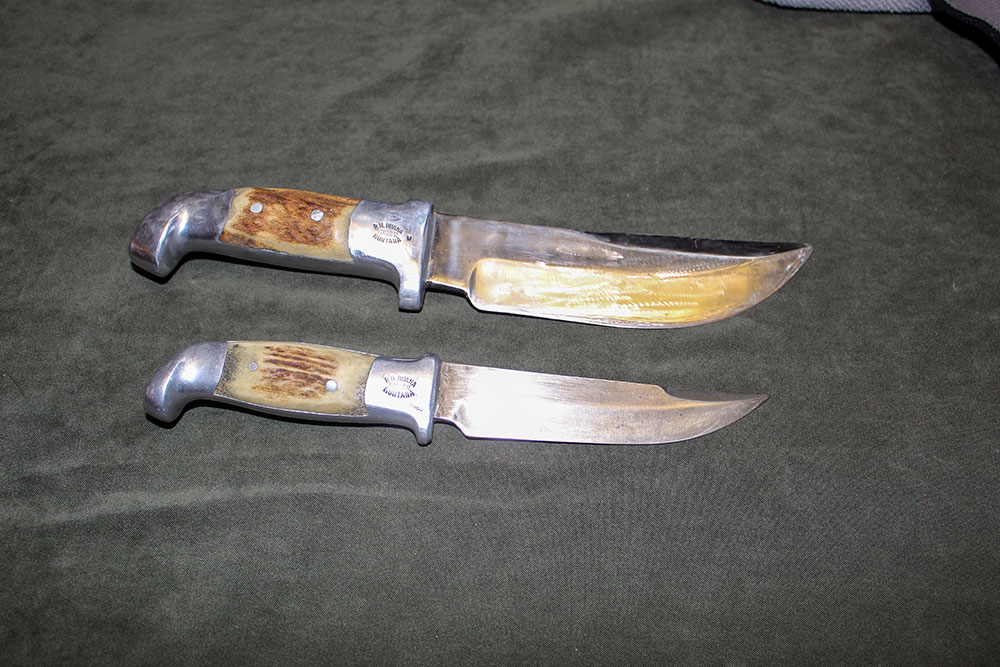
Author’s personally owned Ruana, from an Alaska trek, is shown with one of Ruana’s traditional hunting models.
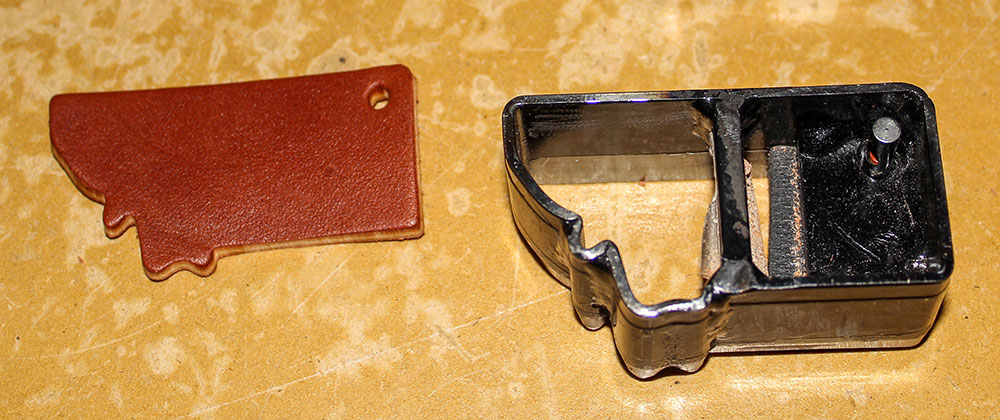
The company is starting a side business, cranking out key chain accessories made from scrap leather, die-cut to resemble individual states.
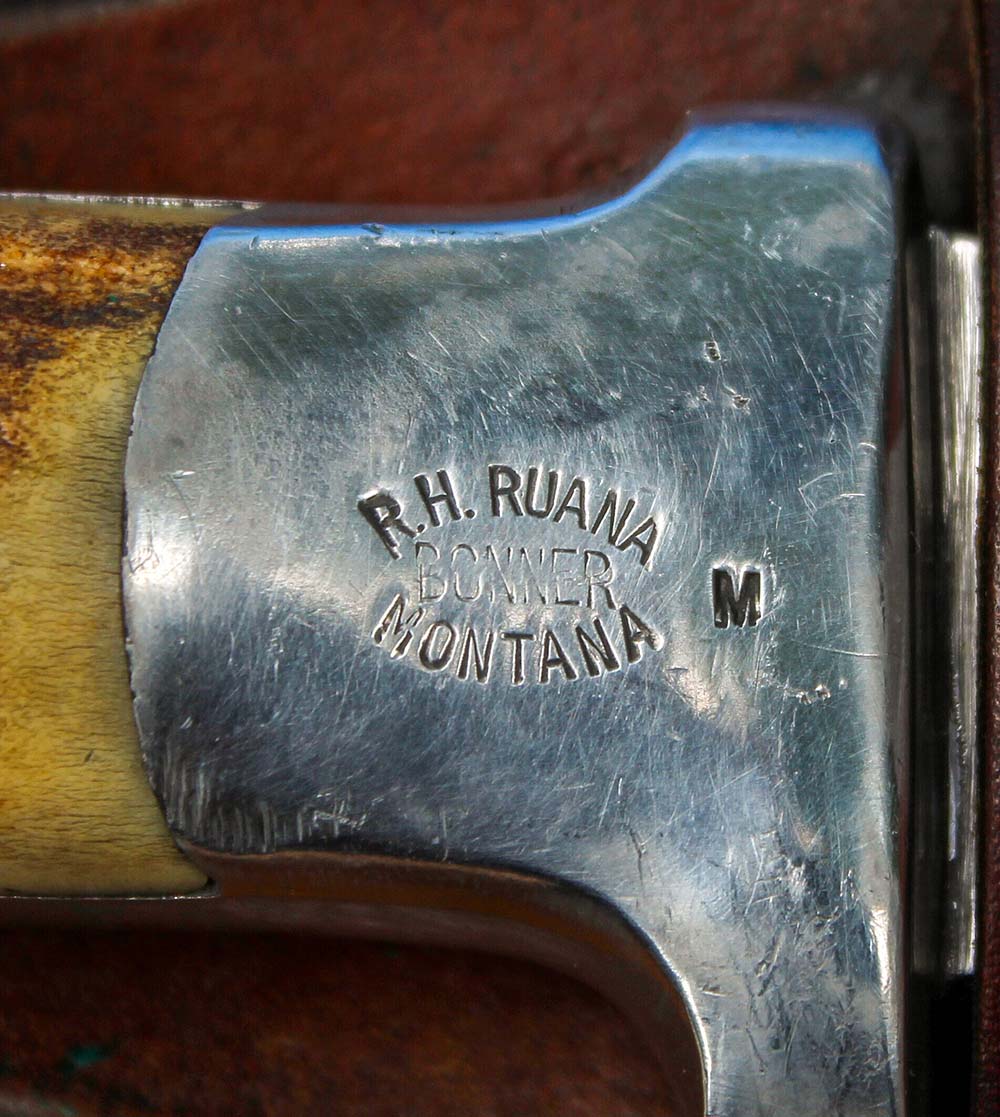
The stamp is simple yet has a tale of its own. The little “M” next to the brand designates the era in which it was crafted.
Still, the traditional Ruana knife is what remains the proverbial backbone of this company. As noted by Mike, “Every knife is one of a kind.” He’s right. No two Ruana knives are exactly the same, even if they are the same model. Each one is unique, whether due to the antler inserts or some other variation in handle or blade.
They still come with handsome leather sheaths, except that the sheath blanks are now die-cut rather than cut out by hand using a pattern. And the original coal forge has been replaced with gas forges Mark built. As noted earlier, coal is still used for hardening knife blades.
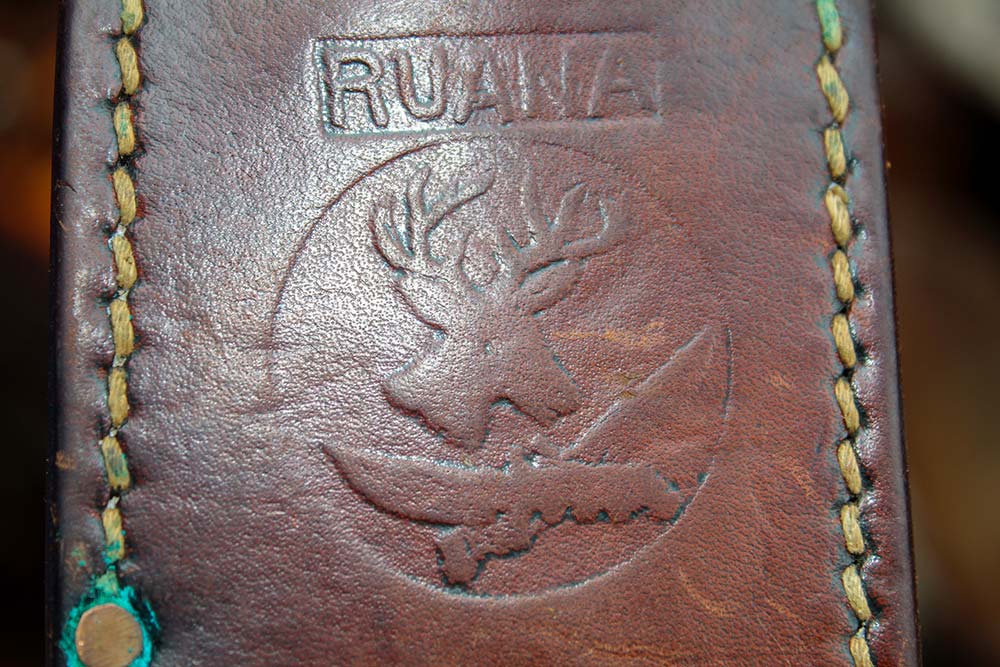
The company builds its own leather sheaths and stamps them simply but prominently right in front, where everyone can see.
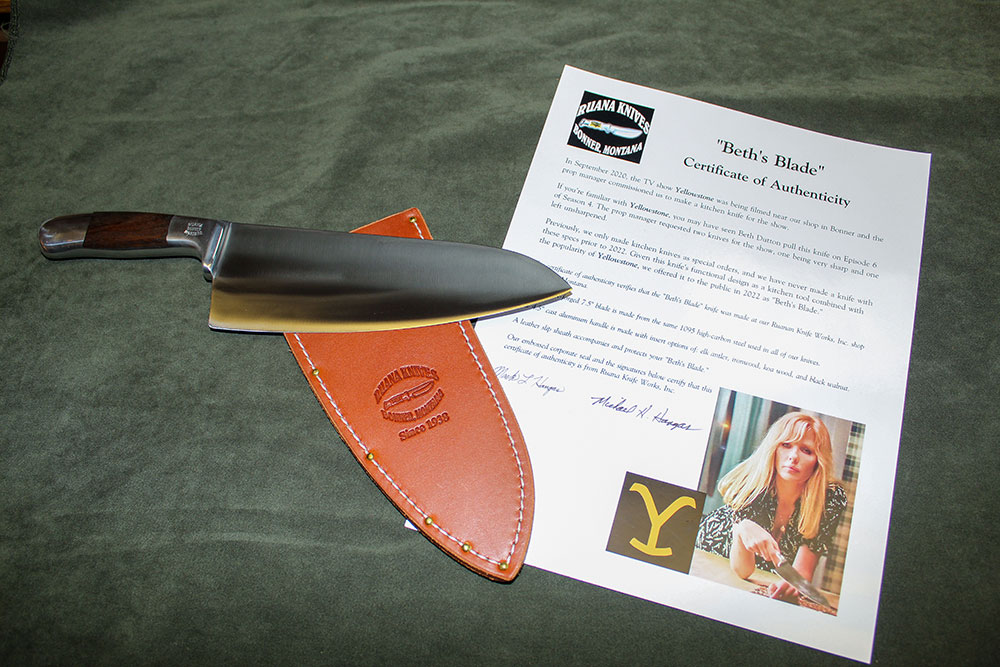
“Beth’s Blade” was produced as a kitchen prop for the popular Paramount Network saga “Yellowstone,” set on the fictional Dutton Ranch in Western Montana.
While some of their tools have changed, the tradition and business philosophy remain.
“We emphasize quality over quantity,” Mike explained. “There’s always a temptation to make a bunch of money, but we make a cutting tool. Once people buy it, they can do whatever they want.”
“We stand by what we sell.”
Right now, Ruana sells everything the company can produce, and every knife is worth the wait.
THE “YELLOWSTONE” CONNECTION
Something I didn’t know until I was chatting with Mike is that Ruana built a knife on special order to be used in the wildly popular Paramount series “Yellowstone,” heading into its fifth season, starring Kevin Costner and an ensemble cast. It is called “Beth’s Blade,” as it was wielded in one scene by actress Kelly Reilly, who portrays Beth Dutton, daughter of rancher John Dutton, the central character in the series, during one episode.
Mike mentioned that some of the interiors for the series are filmed next to the shop, and that some members of the crew happened to visit the shop one day and commissioned the knife used on screen.
SOURCE
Ruana Knife Works
RuanaKnives.com
A version of this article first appeared in the Nov/Dec 2022 print issue of Knives Illustrated.

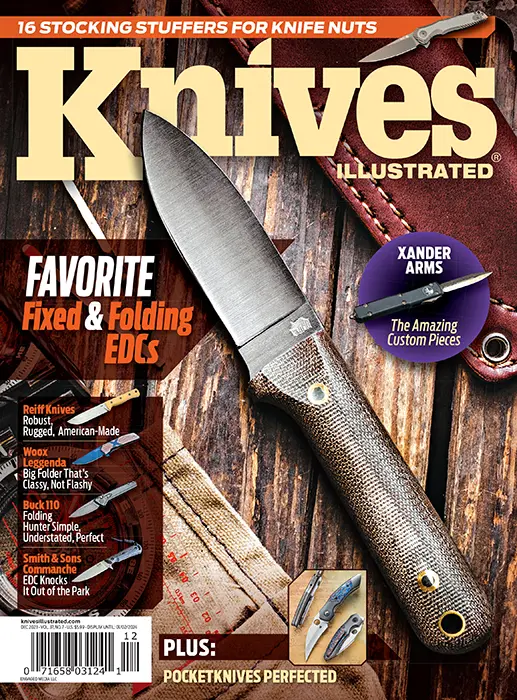 Subscribe / Back Issues
Subscribe / Back Issues